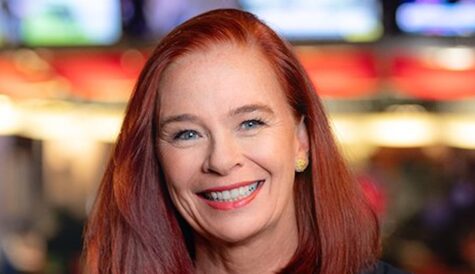Rival channels ‘up after BBC Three online move’
Commercial TV viewing on television sets was up in the in the UK in the first half of 2016 thanks in part to BBC Three’s move from linear to online, according to new research by Thinkbox.
The marketing body for commercial TV in the UK said that it is likely that the closure of BBC Three’s broadcast TV channel in February is “partly responsible for a dip in BBC TV viewing and commercial TV’s strong performance”.
“According to March-May figures from the BBC, the BBC’s broadcast TV viewing has dropped by 8% compared with the same period last year. The drop is more pronounced among 16-34s – BBC Three’s core audience – for whom viewing dropped by 18%,” said Thinkbox.
“With iPlayer viewing flat across the same period as reported in the latest iPlayer performance pack, it appears that the BBC has lost the viewing BBC Three previously provided. This underlines the continued importance of having a broadcast TV channel alongside an online VOD service.”
The research claimed that commercial TV channels that cater for 16-34s have benefitted since BBC Three’s closure, with ITV2 experiencing an increase of 27% year-on-year in time spent viewing from March-June and E4 experiencing an increase of 4%.
ITV2 snapped up linear UK rights to Family Guy and American Dad after BBC Three dropped them prior to its move online, which has helped ratings, while season two of Love Island has done well. E4 has profited from US acquisitions such as the reliable comedy The Big Bang Theory.
Between January-June 2016, overall TV viewing by 16-34 year olds dropped to an average of two hours, 20 minutes a day – a decrease of three minutes a day compared with 2015. However, Thinkbox said this was “entirely borne by BBC channels”, with commercial TV viewing experiencing an increase of one minute a day to an average of one hour, 49 minutes.
BBC Three hadn’t responded to requests for comment at press time, but BBC head of digital communications Colin Watkins tweeted that the Thinkbox stats were “skewed to meet the story”.
The amount of time four-15 year-olds spent watching TV in the first half of the year declined by seven minutes compared to the same period in 2015, with an average of one hour, 41 minutes of TV watched on a TV set during the first half of the year.
Thinkbox said that commercial TV still accounts for 76.4% of children’s TV viewing at an average of one hour, 17 minutes a day – a decline of three minutes per day.
“Any declines for this age group are exaggerated due to the fact that non TV set viewing, which skews heavily to younger people, is not yet included in the standard measurement figures,” according to the research.
Overall TV viewing – including BBC channels – among all age groups, decreased slightly year on year to three hours, 34 minutes a day, a drop of two minutes a day.
However, average commercial TV viewing on a TV set increased by one minute per day year-on-year to two hours, 24 minutes a day, and accounted for 67.4% of TV viewing, said Thinkbox.



